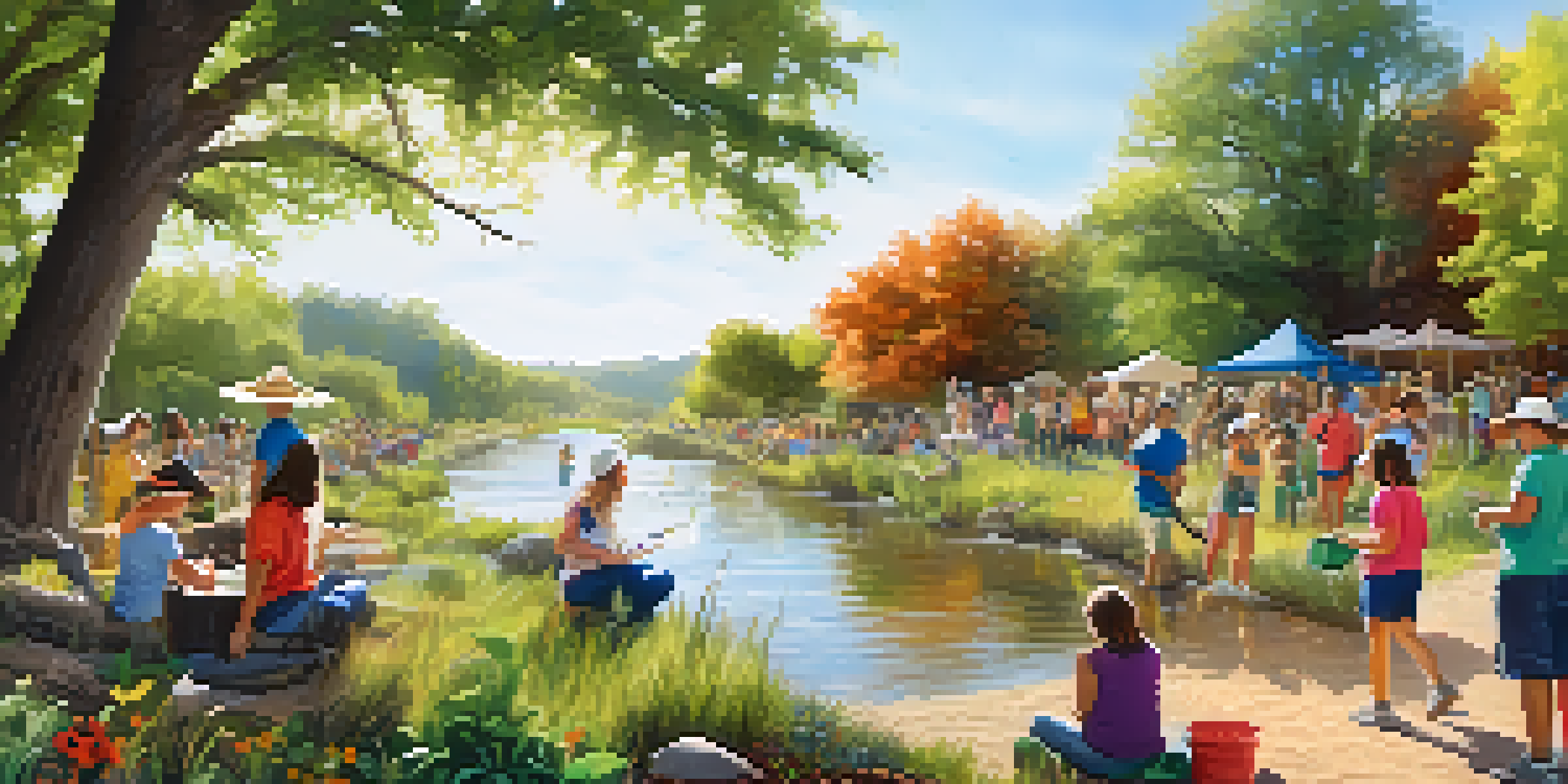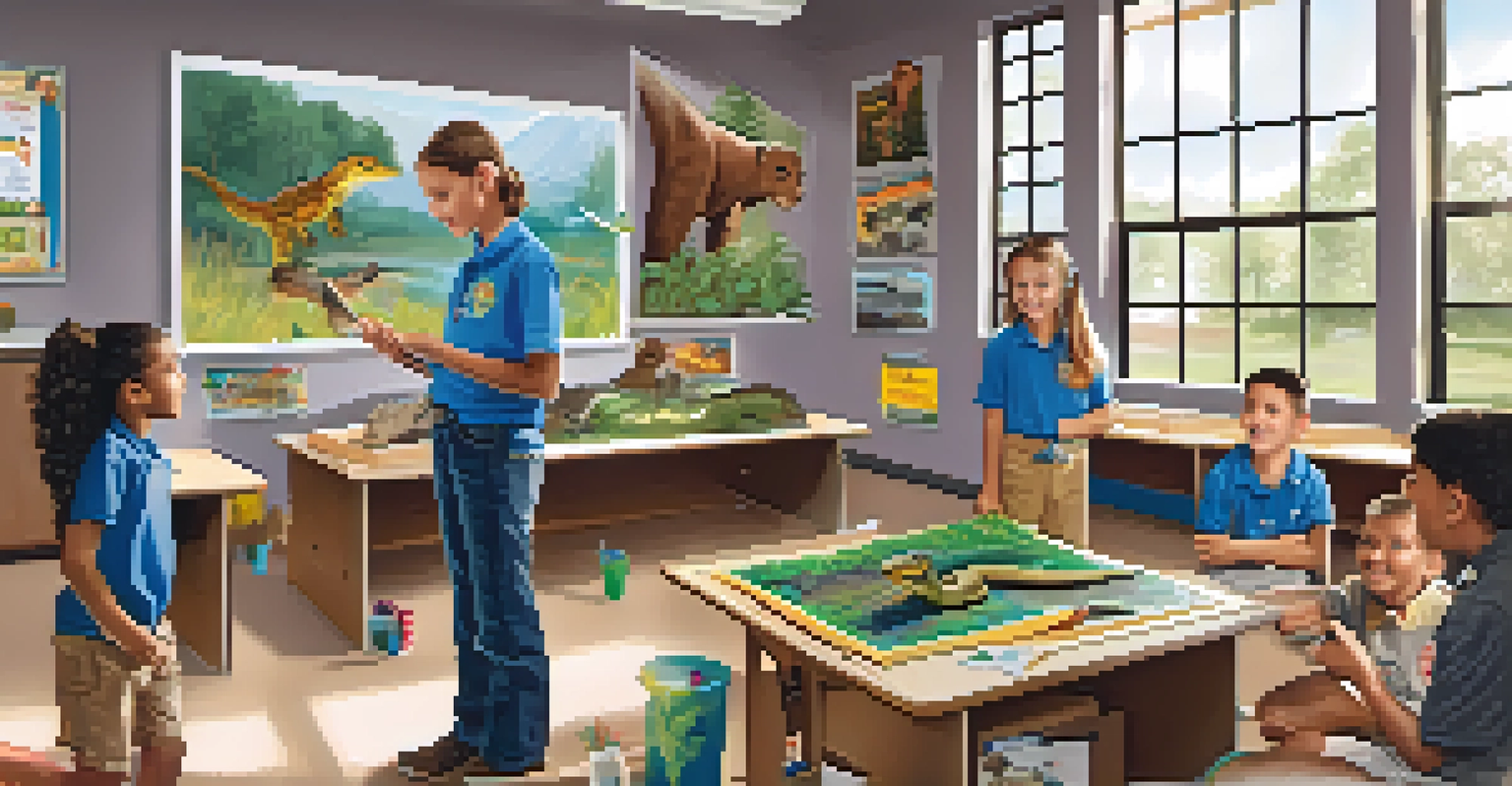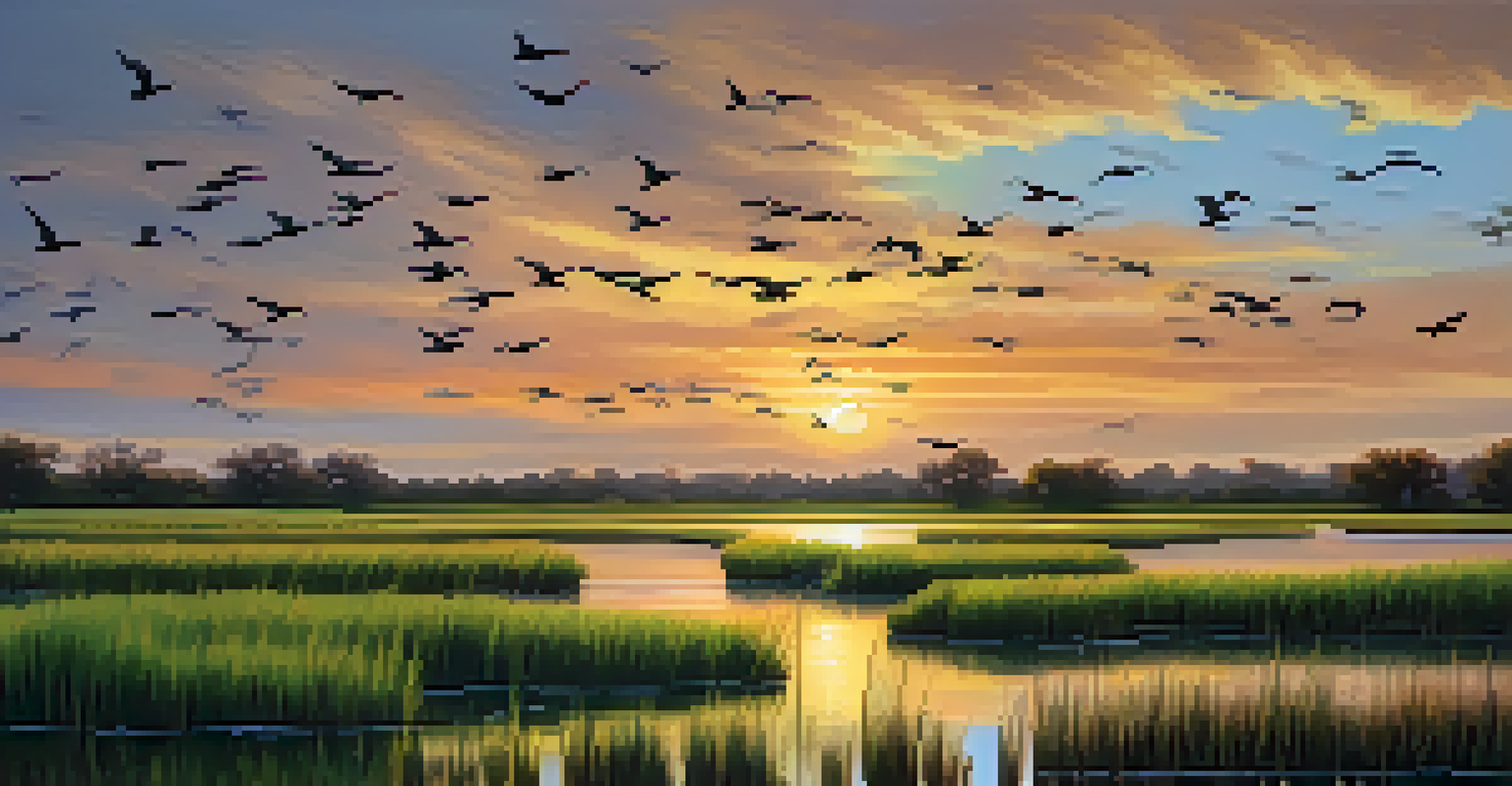Community Involvement in Texas Wildlife Conservation Projects

The Importance of Community in Wildlife Conservation
Community involvement plays a crucial role in wildlife conservation efforts across Texas. When local residents come together, they can pool resources, knowledge, and passion to protect the unique wildlife that calls Texas home. This collaboration not only enhances the effectiveness of conservation projects but also fosters a sense of stewardship among community members.
The greatness of a community is most accurately measured by the compassionate actions of its members.
For example, community-led initiatives often focus on education and awareness, helping residents understand the importance of preserving natural habitats. By engaging families and schools, these programs instill values of environmental responsibility in future generations. Ultimately, it’s the collective effort of individuals that creates a lasting impact on wildlife preservation.
Moreover, community involvement encourages a strong connection between people and their natural surroundings. This bond nurtures a desire to protect and conserve, making residents more likely to participate in conservation activities. As communities unite for a common cause, they create a powerful force for positive change in the environment.
Key Wildlife Conservation Projects in Texas
Texas is home to a variety of wildlife conservation projects aimed at protecting endangered species and restoring habitats. From the Gulf Coast to the Hill Country, initiatives like the Texas Horned Lizard Recovery Plan focus on revitalizing populations of native species through habitat restoration and public education. These projects often rely on the active participation of local communities to achieve their goals.

Another notable example is the Texas Parks and Wildlife Department's (TPWD) efforts to conserve the black-capped vireos and golden-cheeked warblers. Community volunteers contribute to habitat improvement and monitoring activities, allowing these projects to thrive. Such efforts not only benefit wildlife but also enhance local ecosystems, promoting biodiversity.
Community Drives Wildlife Conservation
Local residents play a vital role in wildlife conservation by pooling resources and fostering stewardship.
In addition to state-led initiatives, numerous non-profit organizations also play a vital role in conservation across Texas. Groups like the Texas Wildlife Association engage communities in land stewardship and wildlife management practices, empowering residents to take action and make a difference. These partnerships illustrate the power of collaboration in addressing conservation challenges.
Volunteer Opportunities in Wildlife Conservation
Many Texans are eager to roll up their sleeves and get involved in wildlife conservation, and there are plenty of opportunities to do so. From participating in habitat restoration projects to joining wildlife surveys, volunteers can make a meaningful contribution to local ecosystems. Many organizations provide training and resources to ensure that volunteers feel equipped to make a positive impact.
The future will be shaped by our decisions today, and we must work together to preserve our planet for future generations.
For instance, the Texas Master Naturalist program offers a fantastic way for individuals to learn about local ecology while volunteering in conservation efforts. Participants engage in various activities, from educating the public to assisting in restoration projects, all while building a robust network of like-minded nature enthusiasts. This program not only benefits the volunteers but also strengthens community ties.
Additionally, events like the Texas Coastal Cleanup allow residents to come together for a day of conservation while enjoying the great outdoors. Such initiatives highlight how community involvement can be both fulfilling and fun, fostering a sense of camaraderie among participants. Engaging in these opportunities deepens individuals' connections to their environment and enriches their lives.
The Role of Education in Conservation Efforts
Education is a cornerstone of successful wildlife conservation in Texas, as it empowers residents with the knowledge to make informed decisions. Schools and local organizations often collaborate to develop programs that teach students about local wildlife and the importance of conservation. By incorporating hands-on learning experiences, students gain a deeper appreciation for the environment.
For example, programs like 'Wildlife on Wheels' bring live animals and interactive lessons to classrooms across Texas, introducing students to the wonders of local flora and fauna. Such initiatives inspire young minds to become advocates for wildlife conservation, fostering a generation that values sustainability. This educational approach not only benefits the students but also enhances community involvement.
Education Empowers Conservation Efforts
Educational programs inspire future generations to value and advocate for wildlife preservation.
Moreover, community workshops and events often provide valuable information on conservation practices, attracting diverse audiences. These gatherings create a platform for sharing ideas and experiences, encouraging collaboration among residents. The ripple effect of education can lead to increased community engagement and more successful conservation efforts.
Success Stories: Communities Making a Difference
Across Texas, numerous communities have successfully united to implement wildlife conservation initiatives, showcasing the power of collective action. One inspiring example is the efforts of a small town in Central Texas that rallied to restore a local wetland area. Through fundraising events and volunteer days, residents transformed the degraded site into a thriving habitat for migrating birds and other wildlife.
Another success story comes from the coastal communities working to protect sea turtles during nesting season. Through collaboration with local organizations, volunteers help monitor nests and educate beachgoers about the importance of keeping the beaches clean. The positive impact of these efforts has led to increased nesting success rates, demonstrating the difference that community involvement can make.
These success stories serve as a testament to the impact that passionate individuals can have when they come together for a common cause. They inspire other communities to take action and emphasize the importance of fostering a culture of conservation. As more Texans become engaged, the potential for wildlife conservation in the state continues to grow.
Challenges Facing Community Involvement
While community involvement is essential for wildlife conservation, there are challenges that can hinder participation. Limited resources, such as funding and staffing, can make it difficult for organizations to engage volunteers effectively. Additionally, some communities may lack awareness of local wildlife issues, leading to lower involvement in conservation efforts.
Another significant challenge is balancing development with wildlife preservation. As urban areas expand, the habitats of many species are threatened, leading to a potential disconnect between communities and their environment. Ensuring that residents understand the importance of protecting natural spaces is vital in overcoming this hurdle.
Success Stories Showcase Impact
Communities across Texas demonstrate that collective action can lead to successful wildlife conservation initiatives.
Moreover, fostering a sense of ownership and pride among community members can be difficult in larger cities. To address these challenges, targeted outreach and education campaigns are essential in raising awareness and building momentum for conservation projects. By tackling these obstacles, communities can strengthen their involvement and support for wildlife conservation.
The Future of Community Involvement in Conservation
Looking ahead, the future of community involvement in Texas wildlife conservation appears promising. As awareness of environmental issues grows, more individuals are eager to contribute to conservation efforts. Harnessing this enthusiasm and mobilizing communities will be crucial in addressing ongoing wildlife challenges and restoring ecosystems.
Innovative technologies and social media platforms are also playing a role in enhancing community engagement. By utilizing these tools, organizations can reach broader audiences and inspire more people to get involved in conservation. Engaging younger generations through digital campaigns can foster a greater understanding of wildlife issues and encourage participation.

Ultimately, the success of wildlife conservation in Texas will depend on the collective efforts of communities working together. By building strong networks of support and emphasizing the importance of local action, Texas can continue to be a leader in wildlife conservation. The future is bright when communities unite for a common purpose, ensuring that Texas remains a vibrant home for its diverse wildlife.